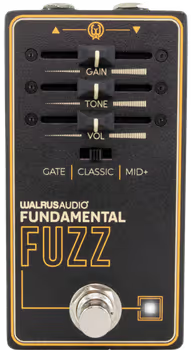
Essential Stoner Rock Guitar Pedals: Desert Rock Tones From Kyuss to QOTSA

Stoner rock emerged from the California desert in the early ’90s, pioneered by bands like Kyuss, Sleep, and Fu Manchu. This genre is defined by its thick, fuzzed-out guitar tones, hypnotic grooves, and psychedelic atmosphere. The sound is fundamentally built on heavy fuzz distortion, slow to mid-tempo rhythms, and a “wall of sound” aesthetic that creates an almost meditative heaviness.
I’ve spent years chasing that perfect stoner rock tone – from Josh Homme’s crispy QOTSA leads to Electric Wizard’s crushing doom-laden riffs. The secret isn’t just in the amplifiers (though Orange stacks help); it’s in the pedals that shape your signal before it hits those tubes. Whether you’re building your first stoner rig or looking to expand your desert rock arsenal, this guide covers the essential pedals that define the genre.
The Stoner Rock Sound: Key Characteristics
Heavy fuzz and distortion form the backbone of stoner rock guitar tone. Unlike metal’s tight, scooped distortion, stoner rock favors thick, saturated fuzz that maintains low-end weight while adding sustain and harmonic richness. Psychedelic elements like octave effects, spacious reverbs, and modulation create the genre’s signature atmospheric quality.
Mid-tempo grooves and hypnotic repetition define the playing style, with riffs that lock into pocket rhythms rather than blazing technical passages. The tone needs to cut through dense mixes while maintaining that crucial low-end thump that makes heads nod and bodies move.
Essential Fuzz Pedals: The Heart of Stoner Rock
Classic No-Nonsense Fuzz
The MXR Classic 108 Fuzz proves that sometimes the simplest approach delivers the most powerful results. This faithful recreation of the 2-transistor Fuzz Face circuit offers pure, unadulterated fuzz with modern reliability and a tiny footprint. What makes it perfect for stoner rock is its raw, organic character that responds beautifully to your playing dynamics.
I love how this pedal captures that classic ’70s fuzz sound without unnecessary complications. The added buffer toggle lets you place it anywhere in your signal chain, solving the traditional Fuzz Face placement issues. It’s the kind of pedal that just works – plug in, turn up, and get massive vintage fuzz tones that cut through any mix.
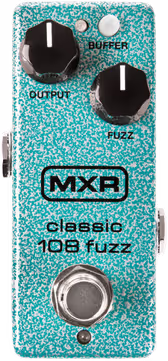
Buy through these links and support Loopy Demos
at no extra cost to you.
Musical Germanium Fuzz Face
The Benson Amps Germanium Fuzz provides temperature-regulated germanium fuzz face tones with modern reliability. I find this pedal more like an overdrive than traditional fuzz, which makes it incredibly musical for stoner rock rhythm work. The impedance control helps it play well with other pedals and different pickup types.
This pedal excels when you want heavy psych tones that maintain note clarity and definition. It’s particularly effective for those dynamic stoner rock passages where you need the pedal to clean up with lighter playing.
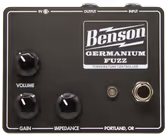
Buy through these links and support Loopy Demos
at no extra cost to you.
Big Muff Territory: Stoner Rock Foundation
Modern Big Muff Evolution
The Walrus Audio Fundamental Fuzz takes the Big Muff concept and adds modern versatility. I’m particularly impressed with the mid+ mode, which adds a crucial midrange boost that helps stoner rock guitars cut through heavy mixes. The gated mode provides that classic starved-amp sound, while the classic mode delivers pure Big Muff worship.
This pedal excels in band situations where you need your fuzz to punch through bass and drums. The mid+ mode is essential for lead work, giving you that Josh Homme-style bite that cuts through without losing the fundamental low-end weight.
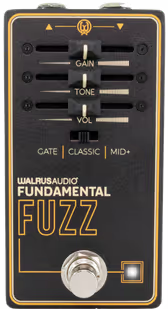
Buy through these links and support Loopy Demos
at no extra cost to you.
Classic Big Muff Variants
This comprehensive comparison covers the EHX Nano Big Muff variants including Triangle, Ram’s Head, Op-Amp, Green Russian, and NYC versions. For stoner rock, the Green Russian delivers that deep, crushing low-end with smooth sustain that’s perfect for heavy rhythm work, while the Triangle provides more scooped mids and aggressive bite for cutting leads.
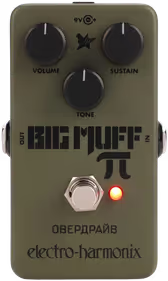
Buy through these links and support Loopy Demos
at no extra cost to you.
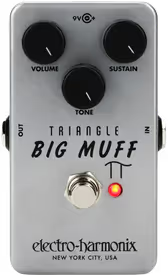
Buy through these links and support Loopy Demos
at no extra cost to you.
Velcro Fuzz: Textural Heaviness
Textural Octave Fuzz Adventures
The Fairfield Circuitry Unpleasant Surprise brings elegant simplicity to octave fuzz with incredible textural possibilities. The C (crush) toggle unlocks the hidden octave fuzz tones, while the G (gain) switch toggles between open and compressed sounds. What makes this pedal special for stoner rock is its focus on happy accidents and sweet spots you discover by ear.
I love how this pedal encourages experimentation rather than scientific dialing. The combination of velcro fuzz texture with octave capabilities makes it perfect for those psychedelic stoner rock moments where you want something unexpected and inspiring. It’s extremely fun to play and nearly impossible to find an uninspiring sound with it.

Buy through these links and support Loopy Demos
at no extra cost to you.
Thumpy Low-End Destruction
The ZVex Woolly Mammoth delivers that distinctive velcro-like, gated fuzz texture that’s become synonymous with modern stoner rock. I love how this pedal makes guitars sound thumpy and full, with a satisfying sputter on aggressive attacks. It’s like a Big Muff crossed with a starved Tonebender, creating something uniquely crushing.
The Woolly Mammoth excels on both single notes and power chords, maintaining clarity even in the most saturated settings. It’s particularly effective for those hypnotic, repetitive riffs that define the genre – each note has weight and presence that keeps listeners locked in the groove.

Buy through these links and support Loopy Demos
at no extra cost to you.
Gated Fuzz with Bias Control
The Old Blood Noise Endeavors Alpha Haunt is a gated fuzz with serious velcro character and bias control for starved-amp textures. The bias knob is the secret weapon – it lets you dial in everything from tight, gated velcro to loose, dying-battery sounds that change the entire character of the fuzz.
I love how responsive this pedal is to playing dynamics. Light picking gives you those classic velcro sputters, while aggressive attacks deliver full-bodied fuzz tones. For stoner rock, the Alpha Haunt excels at creating textural moments that keep riffs interesting over long passages, with gated nature helping tight rhythm work.
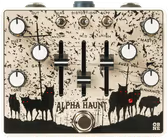
Buy through these links and support Loopy Demos
at no extra cost to you.
Five-State Fuzz Versatility
The Walrus Audio Eons is a five-state fuzz that covers everything from smooth singing sustain to aggressive velcro-like textures. What sets it apart is the comprehensive control over fuzz character through its State knob and full EQ section. I’m particularly drawn to States 3 and 4 for stoner rock applications – they provide that perfect balance of aggression and musicality that cuts through heavy mixes.
The Eons excels at dynamic response, cleaning up beautifully with your guitar’s volume knob and responding dramatically to picking attack. This makes it incredibly expressive for the kind of dynamic playing that defines great stoner rock. The separate Bass, Mids, and Treble controls let you shape the fuzz to fit perfectly in your mix.
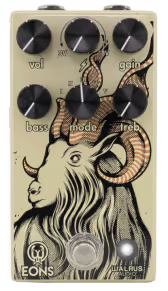
Buy through these links and support Loopy Demos
at no extra cost to you.
Octave Effects: Psychedelic Dimension
Classic ’70s Octave Fuzz
The Orange Fur Coat delivers that classic ’70s octave fuzz sound that adds serious psychedelic dimension to stoner rock. Based on the legendary Foxx Tone Machine, this pedal excels at creating those otherworldly lead tones that transport listeners to the desert.
I love the dual footswitch design – you can engage the fuzz first, then kick in the octave for solos or specific sections. The octave blend control lets you dial in just the right amount of upper octave content without overwhelming the fundamental tone.
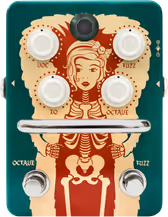
Buy through these links and support Loopy Demos
at no extra cost to you.
Stoner Rock Amp Flavors
Ampeg-Inspired JFET Magic
The Catalinbread SFT is beloved by Josh Homme for good reason – this Ampeg-inspired JFET overdrive literally has a “stoner” mode that goes from compressed breakup to punchy fuzz. I’ve used this pedal extensively for QOTSA-style leads and rhythm work, and it delivers that distinctive compressed attack that cuts through any mix.
The SFT’s magic lies in its ability to sound like a cranked tube amp at bedroom volumes. The stoner mode provides that essential QOTSA compression and sustain, while the normal mode delivers classic rock overdrive tones.

Buy through these links and support Loopy Demos
at no extra cost to you.
The Loudest 30-Watt Head on the Planet
The Orange OR30 makes you question everything you thought you knew about wattage ratings. Despite being a 30-watt head, this thing hits sound pressure levels that rival 100-watt amps, earning it the reputation as possibly the loudest 30-watt amp on the planet. Orange achieved this through cathode bias and tube rectification, giving you that classic Orange growl with serious authority that’s perfect for stoner rock’s crushing needs.
What sets the OR30 apart is its deceptively simple control layout that packs serious versatility. You get a single channel with gain, a 3-band EQ, presence, and two master volume settings you can footswitch between for rhythm-to-lead boosts. The standout feature is Orange’s first-ever bright switch, plus a cross-line presence control that actually works at bedroom volumes. There’s also a headroom switch that drops the output from 30 watts down to 2 watts for apartment-friendly practice.
The OR30’s massive gain sweep means you’re essentially getting two-channel versatility from a single-channel design. Roll your guitar volume back and you’ll get surprisingly clean Orange tones with that signature tube rectifier sag. Crank everything up and you’re in chunky high-gain territory that’s beloved by the stoner-doom crowd. The cathode bias design means you can swap power tubes without rebias, and the tube-buffered effects loop keeps your time-based effects pristine.

Buy through these links and support Loopy Demos
at no extra cost to you.
Portable Orange Power
The Orange Terror Stamp packs genuine Orange tone into a 20-watt hybrid a mp pedal that’s perfect for stoner rock players who need that classic Orange character without the full stack. With a real 12AX7 tube driving the preamp and solid-state power section, you get authentic tube saturation where it matters most.
I love the dual volume setup – Volume 1 and Volume 2 with footswitch control lets you set rhythm and lead levels instantly. The Shape control is crucial for stoner rock: left side gives you mid-forward Orange bite, while the right side provides more scooped tones. At 20 watts, this gets surprisingly loud – we’re talking rehearsal or small gig volume.
The Terror Stamp wants to be driven hard, which is perfect for stoner rock. It delivers that loose, grinding Orange character that responds to picking dynamics like a proper amp. For the price and portability, it’s an incredible value for getting authentic Orange tones in a pedalboard format.
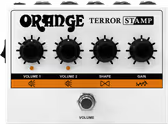
Buy through these links and support Loopy Demos
at no extra cost to you.
QOTSA’s Mid-Pushed Arsenal
Understanding pushed mids is crucial for authentic QOTSA tones. Josh Homme’s signature sound relies heavily on boosting specific midrange frequencies to cut through dense mixes while maintaining that characteristic honky, throaty character. Here are the essential tools for achieving that pushed mid sound across different QOTSA eras.
Versatile Distortion Chameleon
The JHS Hard Drive is a distortion chameleon that can be shaped to cover many different distortion sounds, making it incredibly versatile for stoner rock applications. The secret weapon is its parametric mid EQ – you can dial in that typical QOTSA mid push sound by boosting the crucial frequencies that cut through dense mixes. I love how it maintains note clarity even with heavy gain settings, making it ideal for complex chord progressions.
What makes the Hard Drive special for stoner rock is its ability to add sustain and harmonic richness while letting you sculpt the exact midrange character you need. The parametric mid control lets you target specific frequencies for that Josh Homme-style bite, while the drive and tone controls shape the overall character. It works beautifully for both rhythm and lead applications, adapting to whatever sonic landscape you’re creating.
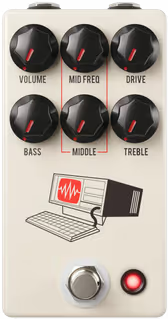
Buy through these links and support Loopy Demos
at no extra cost to you.
MOSFET Mid Boost with Precise Control
The RhPf Electronics Mosferatwo is a premium MOSFET overdrive that excels at pushed mid frequencies essential for stoner rock. The Heart control is crucial here – when switched to the right position, it targets 320Hz for punchy, aggressive mids that cut through dense mixes. Combined with the Bite control (which offers 1kHz or 5kHz boost options), you can sculpt exactly the midrange character you need.
What makes the Mosferatwo special for early QOTSA tones is how the 320Hz Heart mode delivers those “filthy, low-mid boosted tones” that define Songs for the Deaf. The MOSFET circuit provides natural compression and harmonic richness while the dual EQ controls let you dial in precise frequency shaping. It’s an original circuit design that transforms into whatever its owner wants it to be naturally. Available directly from RhPf Electronics.
Dual Parametric EQ Power
The Orange Two Stroke is a dual parametric EQ that gives you surgical control over your frequency response. With Hi and Lo EQ sections offering up to 18dB of cut or boost each, plus a 12dB clean boost, this pedal lets you shape your amp’s voice or add precise solo boosts. The Hi section covers 850Hz-8.2kHz while the Lo section handles 120Hz-1.2kHz – perfect for dialing in those QOTSA midrange frequencies.
What makes the Two Stroke special is its 18V operation, providing massive headroom for clean boosts without compression. I love using it to achieve that characteristic mid push that QOTSA is known for in their earlier records – boosting around 400-600Hz creates that punchy, cutting tone you hear throughout their self-titled album and Rated R. This matches Josh Homme’s famous use of a Boss GE-7 to push 400Hz, combined with his Ampeg’s natural midrange character. The precision of the parametric controls lets you dial in exactly this crucial frequency range for that signature QOTSA punch that cuts through dense mixes.
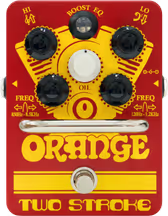
Buy through these links and support Loopy Demos
at no extra cost to you.
Modern QOTSA Envelope Filter
The Dreadbox FX Kinematic is perfect for achieving those later QOTSA tones with its cocked wah sound and character drive. I’m especially drawn to how this pedal captures the honky, throaty frequency response you hear on albums like Villains and In Times New Roman. It’s much more than just an envelope filter – it can function as a cocked wah, spanky compressor, and character drive all in one.
The Kinematic’s sponginess combined with its drive circuit creates that distinctive modern QOTSA character that’s become essential to Josh Homme’s evolving sound. It’s perfect for those moments when you need that fixed wah position without the foot control.
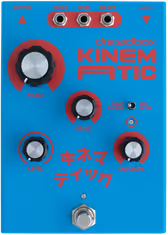
Buy through these links and support Loopy Demos
at no extra cost to you.
Psychedelic Elements: Modulation and Reverb
Classic Phaser Sweep
The Walrus Audio Fundamental Phaser delivers that essential swooshing modulation that adds psychedelic movement to stoner rock riffs. I love how this pedal captures classic ’70s phaser character while offering modern versatility through its Rate, Depth, and Feedback controls. The four-stage design provides that perfect balance of subtlety and intensity.
What makes this phaser special for stoner rock is how it enhances the hypnotic nature of repetitive riffs. Set slow and deep, it creates those oceanic waves of modulation that transport listeners to the desert. For lead work, faster settings add that classic psychedelic sweep that cuts through heavy mixes without overwhelming the fundamental tone.
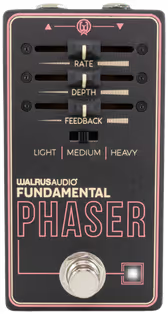
Buy through these links and support Loopy Demos
at no extra cost to you.
Deep Space Psychedelic Reverb
The Catalinbread Sinkhole creates that essential deep space atmosphere with its unique approach to psychedelic reverb. Based on the legendary Roland SRV-2000, this pedal excels at creating those otherworldly textures that elevate stoner rock from heavy to transcendent. I particularly love how it maintains clarity even with long decay times – your riffs stay defined while swimming in cosmic atmosphere.
The Sinkhole’s character is perfect for stoner rock’s psychedelic elements. It adds dimension without washing out your core fuzz tone, creating that sense of vast space that makes listeners feel like they’re floating through the desert night sky.
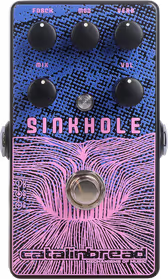
Buy through these links and support Loopy Demos
at no extra cost to you.
Stoner Rock Pedalboard Setups
Starter Stoner Setup ($400-600)
MXR Classic 108 Fuzz → Walrus Audio Fundamental Fuzz → Catalinbread Sinkhole
This essential three-pedal setup covers all the stoner rock basics: classic Fuzz Face foundation, modern Big Muff versatility, and psychedelic reverb. The Classic 108 delivers pure vintage fuzz character, the Fundamental Fuzz offers Big Muff tones with crucial midrange options, and the Sinkhole provides deep space atmospheric depth.
Professional Stoner Rig ($800-1200)
Catalinbread SFT → Walrus Audio Fundamental Fuzz → ZVex Woolly Mammoth → Walrus Audio Fundamental Phaser → Orange Two Stroke → Catalinbread Sinkhole
This setup provides incredible versatility for recording and live performance. The SFT delivers QOTSA-approved overdrive, the Fundamental Fuzz offers Big Muff versatility with midrange options, the Woolly Mammoth provides velcro fuzz textures, the Fundamental Phaser adds psychedelic movement, the Two Stroke shapes your midrange frequencies, and the Sinkhole creates deep space atmospheric depth.
Dream Stoner Arsenal ($1500+)
Benson Amps Germanium Fuzz → JHS Hard Drive → RhPf Electronics Mosferatwo → Walrus Audio Eons → Orange Fur Coat → Dreadbox FX Kinematic → Walrus Audio Fundamental Phaser → Orange Two Stroke → Catalinbread Sinkhole
This comprehensive setup covers every possible stoner rock tone, from subtle germanium warmth to QOTSA’s characteristic pushed mids. Multiple fuzz and overdrive options let you layer textures, the Fundamental Phaser adds psychedelic movement, while the EQ and envelope filter provide precise tonal shaping for each song section.
Playing Technique Tips
Palm muting is essential for stoner rock rhythm work – it tightens up the low end and creates that percussive attack that locks with the drums. Practice muting with varying pressure to create dynamic contrast within riffs.
Sustain control through picking dynamics becomes crucial with high-gain fuzz pedals. Learn to use your guitar’s volume knob to clean up tones and create dynamic builds within songs. Single-note emphasis in power chord progressions – hitting individual notes within chords – adds melodic interest to repetitive riffs.
Conclusion
Stoner rock’s power lies in its ability to be both crushing and hypnotic, aggressive and meditative. The right pedals don’t just add distortion – they shape the very character of your musical expression. Whether you’re channeling Kyuss’s desert mysticism, Sleep’s meditative heaviness, or QOTSA’s sharp aggression, these pedals provide the essential tools for authentic stoner rock expression.
Start with the basics – a good fuzz and reverb will take you far. As you develop your sound, add the specialty pedals that speak to your particular vision of stoner rock. Remember, the best stoner rock tone serves the groove, creating that irresistible combination of heaviness and hypnotic rhythm that defines the genre.
Discover More In-depth Demos


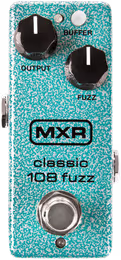
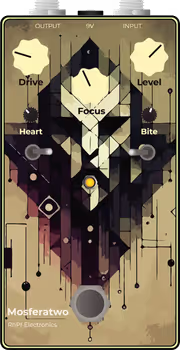

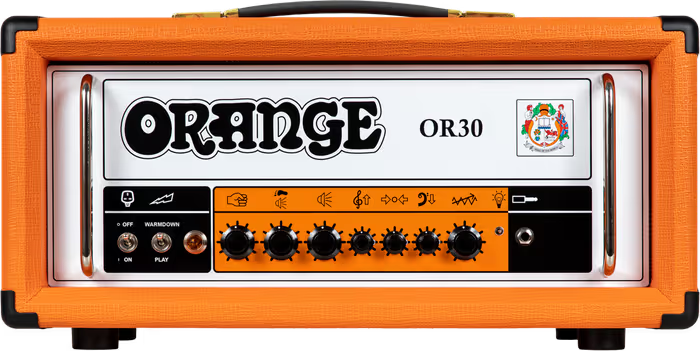
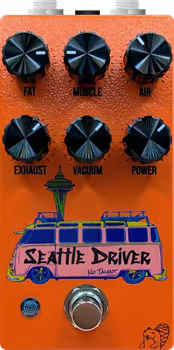

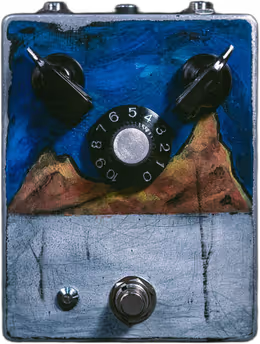
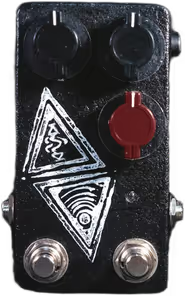
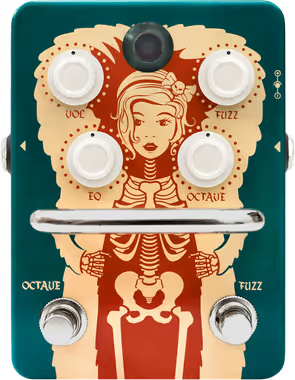
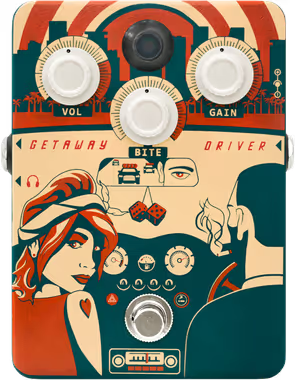

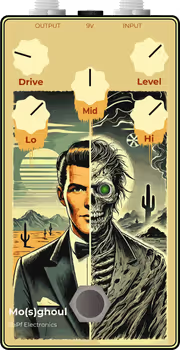
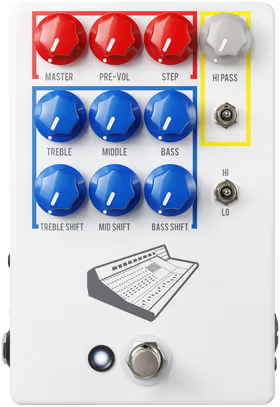
Similar Articles
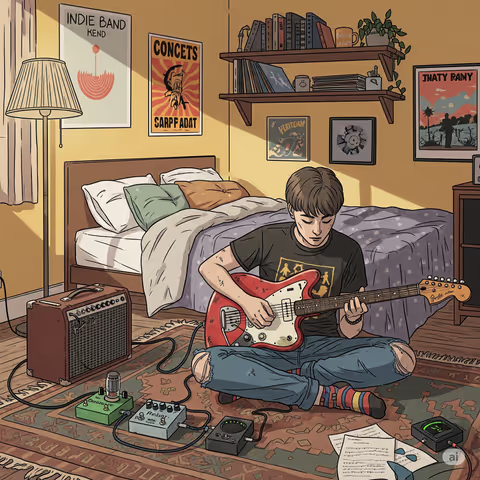
Budget Guitar Pedals That Sound Expensive: Best Value Effects Under $150
Discover budget-friendly guitar pedals that punch above their price point. From the classic BOSS DS-1 to the versatile Walrus Audio ...
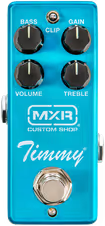
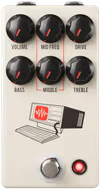

What's the Difference Between Overdrive, Distortion and Fuzz?
In the world of guitar pedals and sound design, thre is often confusion about the terms overdrive, distortion and fuzz. ...


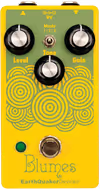
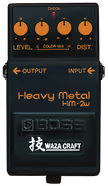
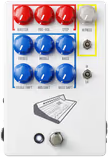
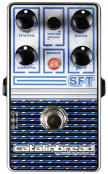


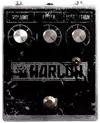
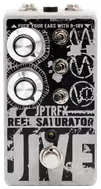
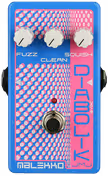
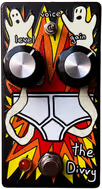
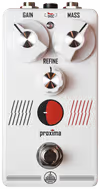
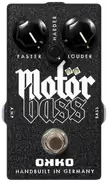
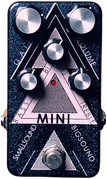
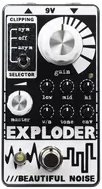





What is the Best Bass Distortion Pedal?
A shootout of the best bass distortion pedals. I love using guitar pedals on bass and experimenting with finding the ...